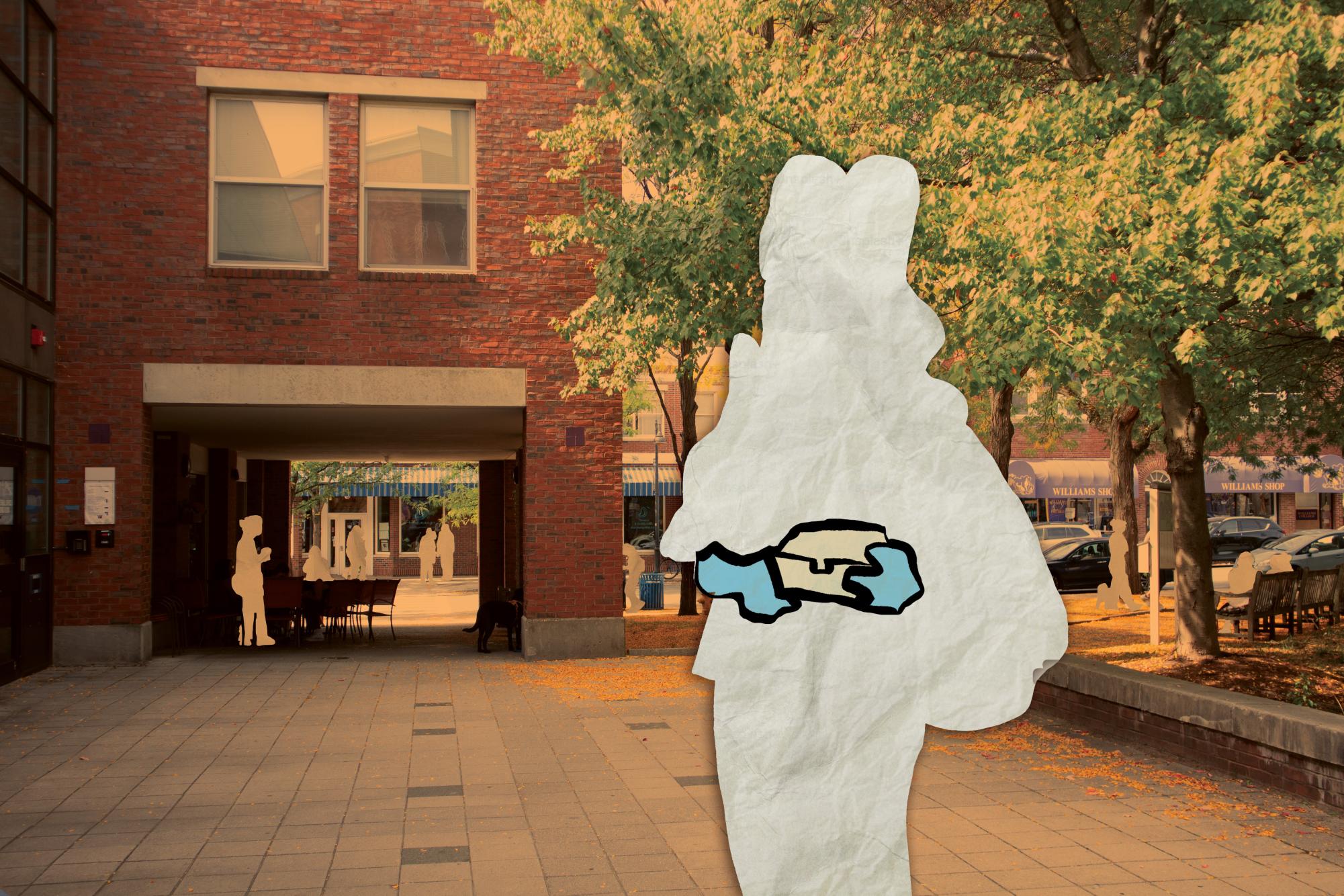
Imagine a version of the College where it’s Sunday morning all the time. There isn’t a single other student in sight. Maybe the apocalypse hit overnight, and you just didn’t notice. You’re the last person on Earth — or in Paresky, at least.
Every November, as almost everyone drives or jets home for Thanksgiving Break, the campus descends into a week-long Sunday morning, and only a few remain to experience it. Last year, I was one of those few.
An episode of Buffy the Vampire Slayer, watched in the (empty) Sawyer Reading Room. An aimless wander down an (empty) Spring Street. An aimless wander back up a (still empty) Spring Street. Another episode of Buffy, this time in my very own booth in Lee Snack Bar (empty, of course). And, lastly, as a treat, one more aimless wander down Spring Street again.
Last November, in the run-up to Thanksgiving, my mental health was already nearing a record low. In my first semester at the College, I was absolutely certain — like so many Ephs before me — that everyone else had it all figured out. Friendships, belonging, community, the works. I was lonely, isolated, and homesick, 3,000 miles from home, and now stuck in middle-of-nowhere, Mass., for Thanksgiving.
The negative impact this time of complete isolation had on my already declining mental health was significant. For five days, Integrated Wellbeing Services was shuttered, leaving students with only emergency helplines. Although I now have the support and community I needed so desperately back then, it troubles and disappoints me that, this Thanksgiving, many students may suffer through the very same experience.
I couldn’t afford the flight home to California last year or this year. My travel allowance — funds dedicated to financial aid recipients’ transport to and from the College at the beginning and end of each semester — cannot be applied to travel for mid-semester breaks, per the financial aid policy. Left to my own devices, I would potentially be forced to come up with upwards of $1,000 for the flight alone.
Both this year and last, I sincerely considered using the entirety of my Personal Expenses Grant — funds that I need to support myself for the semester — just to pay for a flight home. I thought about picking up extra shifts every week at my campus job, an undertaking that absolutely would have negatively impacted my grades, to soften the blow of the cost. For an institution that is so outspoken about preventing students’ financial disparities from affecting the quality of their college experience, the College’s failure to account for these disparities when it comes to breaks, especially Thanksgiving, is a glaring oversight.
The students stuck on campus during Thanksgiving Break are almost always those already most likely to feel isolated, especially when it is their first semester at the College: international students, low-income students who cannot afford to travel home, and students without welcoming families to return to, even if they could.
As Thanksgiving approaches, I strongly advise the College to reconsider its approach to the student experience during this time. Last year, there was no natural way to find community during the break: no hikes hosted by the Williams Outing Club, no activities organized by the Residential Life Team (RLT), nothing. Socializing would have required an inordinate amount of effort on my part. As an already isolated and socially overwhelmed first-year, now separated from my family while everyone else returned to theirs, I didn’t have that energy. That College employees are given time off for this holiday does not preclude the College from organizing events and community spaces during the five days of Thanksgiving Break.
It’s clear that it’s possible to create such spaces, as exemplified by the efforts of the International Students Association (ISA) last year. Students could eat a catered dinner on Thanksgiving Day organized by ISA with support from RLT and several College offices. Otherwise, students were encouraged by the College to stockpile food from Driscoll for Thanksgiving dinner before it closed at 2 p.m. This event demonstrates the College’s capacity to facilitate community and support for students during this time, and unfortunately, highlights its complete failure to take the initiative to do so. While I am deeply grateful for ISA and RLT’s efforts, it is unacceptable for the College to place the burden not only of creating community, but of providing food, on students’ shoulders.
Looking back on my five days of Thanksgiving Break, I cannot recall a single conversation I had in person with another student outside of this event.
Beyond additional programming, the College should seriously reconsider its rigid regulation of the travel allowance. Even if necessities like community spaces, mental health services, and food weren’t so difficult to access during Thanksgiving Break, the College should still recognize that providing students with access to travel during mid-semester breaks is not an unnecessary or frivolous expense. In many cases, it is critical to students’ sense of equality at the College. Watching friends return home to their loved ones for Thanksgiving as you face a week of isolation is not the same as missing out on an extravagant reading period vacation because the College wouldn’t pay for it. Rather, it creates a deep feeling of loss, exclusion, and alienation. Were the College to expand the travel allowance, especially for students with naturally higher travel expenses, and permit students to choose to use these funds to return home during mid-semester breaks, students like me would benefit greatly.
Now a sophomore, I am lucky enough to have a far stronger sense of community and belonging here at the College than I did last November. If I end up on campus for another Thanksgiving, I’ll make do — I have several more seasons of Buffy to go, after all.
Still, many students stuck on campus this November won’t be so lucky. And they deserve more to be thankful for than a takeaway container of mashed potatoes — cold, of course, since dinner closed at 2 p.m.
Rebecca Call ’27 is from Campbell, Calif.




